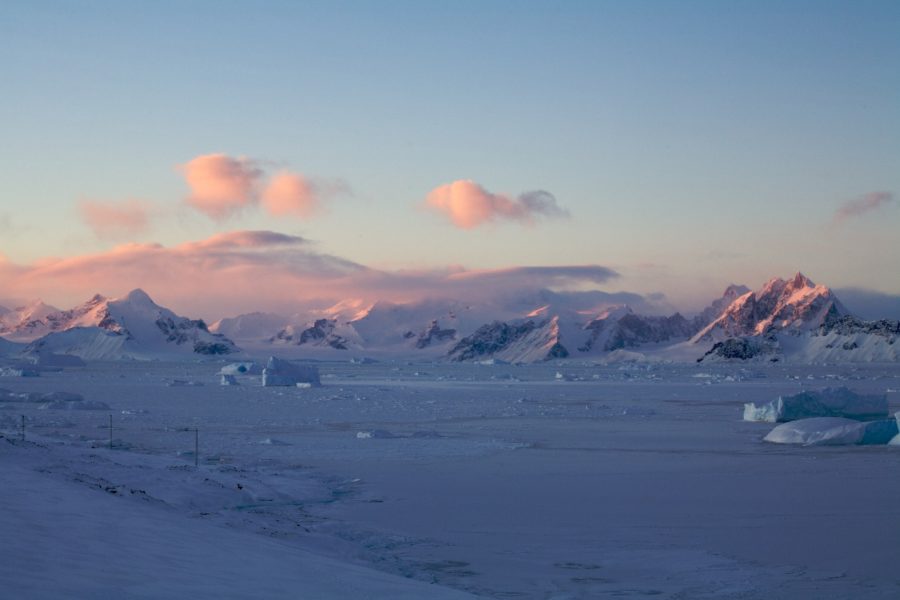The increase in extreme weather events represents the sharp and erratic edge of climate change. But what happens when such weather hits the continent of extremes – Antarctica?
Dr. Louise Sime and Dr. Tom Bracegirdle, climate scientists from the British Antarctic Survey, explain how global warming is causing extreme weather and what this means for the future climate. They also discuss what scientists are doing to accelerate the understanding of these events.
From the record-breaking heatwave in Northern India to intense flooding in Dubai, extreme weather and 'record-breaking' events are increasingly covered in the media. This isn't just a trend; it’s a scientific fact that rising global temperatures have led to more severe weather extremes.
Global warming discussions often focus on average temperature increases of 1.5°C, 3°C, or more. These averages might seem modest, but they set the context for measuring, modeling, and comparing the frequency and intensity of extreme events worldwide due to human-induced warming.
Extreme weather isn’t just about temperature; it includes strong storms, hurricanes, heavy rainfall, flooding, and droughts. Warmer air holds more moisture, leading to more severe precipitation extremes.
For detailed information, the Intergovernmental Panel on Climate Change's Sixth Assessment Report from 2021, specifically Chapter 11 on Weather and Climate Extreme Events, is very comprehensive.
These increasing extremes affect every part of the planet, and at the British Antarctic Survey, we are particularly interested in the changes in polar regions and their feedback effects elsewhere.
Extreme Weather in Extreme Places
Antarctica, known for its extreme conditions, has seen high-impact and record-shattering events in recent years. For the region’s plants, animals, and delicate ice systems, these generally cold, windy, and snowy conditions are normal. However, recent years have seen extreme events that can have dramatic physical impacts.
In 2002, the northern Antarctic Peninsula experienced an extremely warm summer, leading to severe melting and the breakup of the Larsen B Ice Shelf. A decade later, East Antarctica saw the most extreme heatwave recorded, with temperatures rising by 38.5°C above the local average due to an atmospheric river bringing warm, moist air from the tropics.

Sea ice formation and breakup around Antarctica, which fluctuates with the seasons, is also influenced by weather. In 2023, sea ice around Antarctica was at a record low since satellite records began in 1979.
Why Does It Matter?
Antarctica's weather affects us all. The continent's vast ice sheets are integral to Earth's global climate systems, and changes there have worldwide impacts. Melting ice will significantly affect global sea levels. For example, West Antarctica’s ice sheet contains enough water to raise sea levels by about 3.5 meters, posing serious consequences for coastal communities globally.
Beyond sea levels, sea ice is crucial to Antarctica’s ecosystems, impacting species like penguins, seals, and whales, which rely on the ice for survival. Weather extremes can rapidly alter ice conditions, disrupting these ecosystems and affecting the carbon cycle.
Future Expectations
We are now living through the future predicted by past climate models. Future climate modeling suggests that recent extreme events are minor compared to what might happen with increasing greenhouse gas emissions. As the balance of Antarctica’s climate system is further disturbed, the global impacts will only increase.

Research at BAS
The British Antarctic Survey (BAS) leads research on extreme weather events in Antarctica and their impacts. They are at the forefront of international projects using advanced technology and powerful supercomputers to predict future scenarios.
One such project, ExtAnt (extant.ac.uk), aims to unravel the complex causes of Antarctic extremes and their impacts. Another project, SURFEIT (surfeit.ac.uk), focuses on how mass and energy exchange between the Antarctic ice sheet surface and the atmosphere affects sea level rise.
By deepening the understanding of Antarctica’s weather, we aim to protect the planet for future generations.
